Contents
1……….. Abstract
2……….. Architecture Context and Overview.
2.1………Solution Architecture.
3……….. Operational Manual per Topic.
3.1…….. Solution Documentation.
3.1.1……Technical Landscape Documentation.
3.2………Performance and Availability Management
3.2.1……Use Case Description.
3.2.2……Performance and Availability Management via Successfactors Administration tools.
3.2.3……Performance and Availability Management via SAP Solution Manager
3.2.4……Performance optimization via Akamai
1. Abstract
This manual provides guideline in order to smoothly operate SuccessFactors solutions. The following guidelines principle and related operation guidelines will be addressed:
- Single source of truth
- Full transparency regarding performance and availability
- Reliable data transfer and message transport
- Every business critical exception is caught and reported
- No data inconsistencies between Public Cloud and OP/Private Cloud components
- Business Process KPIs can be tracked for all components
- Maintenance windows and down times need to be communicated in advance
- Synchronized software and configuration maintenance needs to be ensured
- No change is executed unsynchronized
- All software and configuration changes are tested end-to-end
- All IT Service Management processes have to run smoothly integrated
- Safe and reliable remote access
Accordingly this document provides information about existing tools to support customer for daily operations on the integrated solution but also some best practices and references.
2. Architecture Context and Overview
2.1 Solution Architecture
SAP and SuccessFactors offer flexibility for SAP customers who want to move HR business processes to the cloud. There are two typical deployment models that are prevalent across the SAP customer base. These are:
- Talent Hybrid
- Full Cloud HCM.
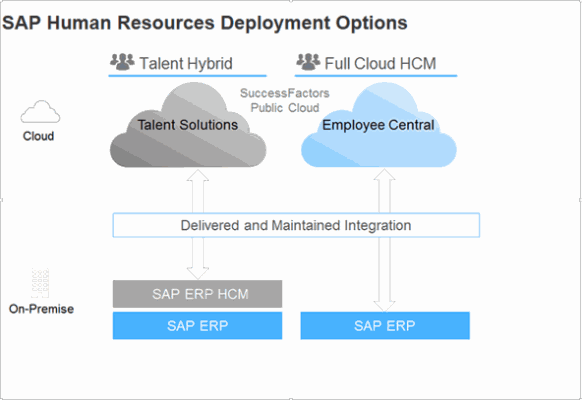
For details on the different offers from SAP and architectural details, please refer to http://service.sap.com/public/hybrid
The vast majority of SuccessFactors customers does NOT integrate Success Factors with SAP ERP. Such customers still oftentimes integrate SuccessFactors with other solutions. Some standard cases of such integrations are described under https://help.sap.com/cloud4hr – >EmployeeCentral in various integration guides.
3.Operational Manual per Topic
3.1 Solution Documentation
Solution Documentation is referencing the guiding principle Single source of truth also for hybrid solutions. It is divided into two parts:
- Technical Landscape Documentation:
In SAP Solution Manager this task is fulfilled by the Landscape Management Database (LMDB)
- Business Process Documentation:
Documenting the end-to-end business processes is especially important for testing purposes and change impact analysis.
This includes documentation for OP/Private Cloud components as well as Public Cloud components. Documentation of Public Cloud components in SAP
Solution Manager is a new functionality.
3.1.1 Technical Landscape Documentation
3.1.1.1 Use Case Description
The various Public Cloud components need to be represented in SAP Solution Manager in a light weight fashion. For this purpose the entity External Service has been introduced.
External Services are modeled in LMDB. External Services can be seen as light weight technical systems. They offer a rough description of their service, but do not provide details about how the service is built technically. For example SAP Solution Manager will not get knowledge about installed software components or host virtualization.
Like technical systems, external services can also be assigned to business processes.
3.1.1.2 Solution Documentation via SAP Solution Manager
Solution Manager provides a way to document your Landscape component in a light way so that they can be used in the different applications like the Monitoring and Alerting ones.
How to: Launch the System Creation UI
In your Solution Manager run transaction s2c_setup
Here you can define and configure different system types for Hybrid solutions and use them in Integration Monitoring and exception management.
You can create for those systems connections with name, description and endpoint description which can later on be used for exception extraction or connection monitoring.

More information about how to document your solution is available from the Application Help.

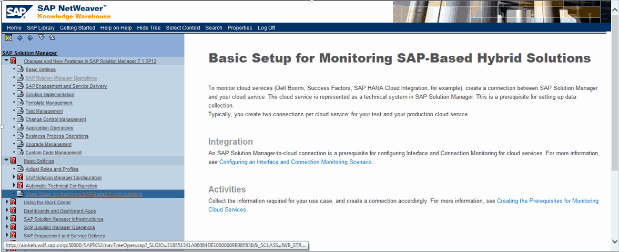
Setup guide is available here:
http://wiki.scn.sap.com/wiki/display/TechOps/Public_Cloud_Operations_home
Prerequisites and additional information
Solution Manager 7.10 SP13
This functionality is not included in the standard Solution Manager setup, however, it is fully supported by SAP. The notion of extended services has been introduced in addition of the Technical systems entities to allow customer to model their cloud solution and benefit of the standard Solution manager tools.
Currently (SP13) supported are the following extended services:
- SuccessFactors – Employee Central
- SuccessFactors – Learning
- Dell Boomi
- SAP Cloud for customer
- SAP Hana Cloud Integration
3.1.1.3 Solution Documentation via SAP HANA Cloud Integration
Additionally, in SAP HCI, you can model your landscape and define the various business processes like the synchronization one.
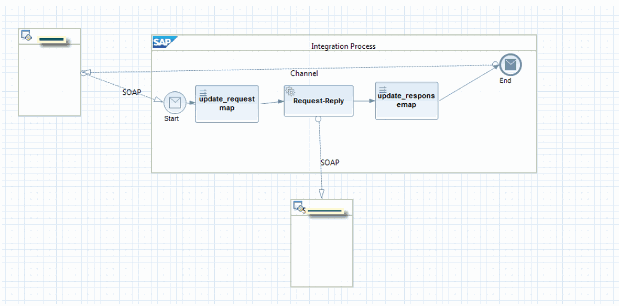
An Eclipse add-on allows you to model your landscape and processes, to do some mapping or transformation to your messages and then deploy the result to your HCI tenant.
This allows you to integrate different systems in your Landscape.
How To: use HCI Integration Designer
In the Eclipse, install the SAP HANA Cloud Integration Tools. It contains the feature SAP HANA Cloud Integration to develop and configure integration flows. For more details, please refer to:
https://tools.hana.ondemand.com/#hci
Prerequisites and additional information
To use the HCI Eclipse add-on required version of Eclipse is Kepler (4.3)
3.2 Performance and Availability Management
The section Availability and Performance Management is referencing to the guiding principle Full transparency regarding performance and availability.
3.2.1 Use Case Description
Availability and performance management is based on monitoring and detecting deviations from expected end user performance targets aligned between customer and service provider.
3.2.2 Performance and Availability Management via Successfactors Administration tools
Successfactors regularly provide to his customers Product Operations Customer Reports. Based on the support contract, customers can get them monthly or on demand. Some on this information relies on internal tools, some others are accessible online
ART (Availability and Response Time) are available for general use on Sharepoint.
3.2.2.1 Customer Availability
System Availability
The Customer’s application URL is monitored once every minute, from the Internet, via 30+ global sensors (testing sites). The monitoring tools measures the time the system was available. System Availability is defined by the monitoring tool’s access to the URL and with Login/Logout activity from the monitoring tool.
- Unsuccessful tests could be due to:
- Transient Internet Issue
- Scheduled Maintenance
- Application or Data Center Infrastructure Issue
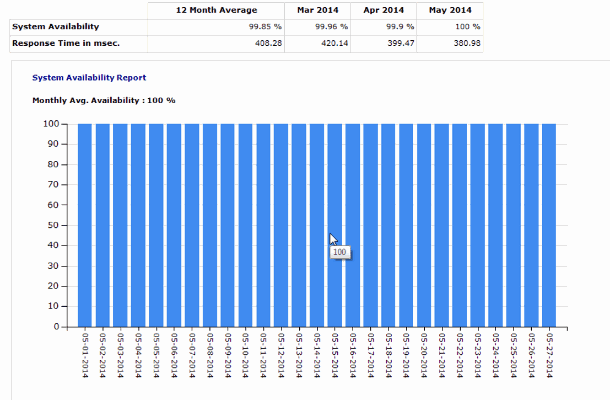
Figure 3 – System Availability Report
3.2.2.2 Response Time Report
Response Time
Response time is measured during each one minute test with the average for the measured period provided in milliseconds.
Note: As of September 2013, monitoring tools are configured to capture response times using the latest BizX feature-rich user interface-v12. Because of these monitoring changes beginning September 2013, reports will show new v12 interface standard response times that are more reflective of actual customer experience when logging into the application.
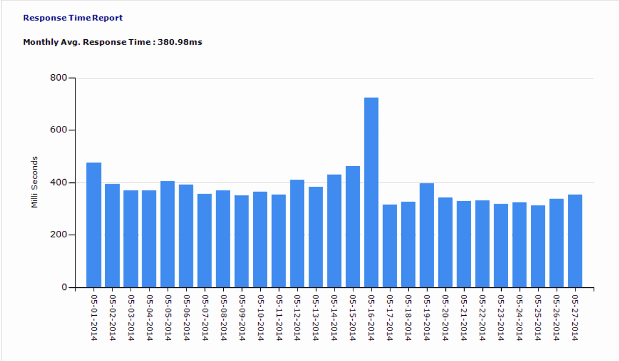
Figure 4 – Response Time Report
3.2.2.3 Service Availability Status
Service Status Dashboard provides a macro-level overview of the production data centers and service status. Service Status Dashboard provides status for the current day and monthly historical status of each data center.
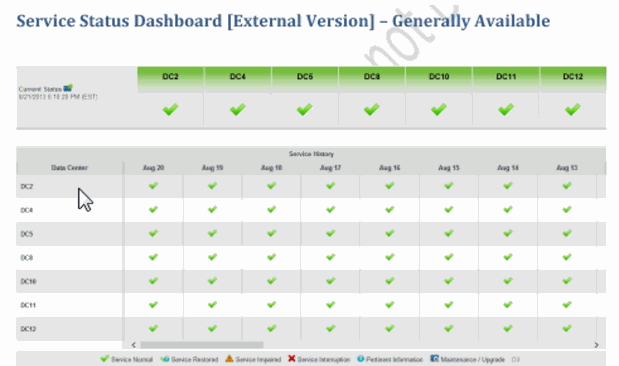
Figure 5 – Service Status Dashboard
How to Until March 2015, you will have access to your service status via the support portal
support.successfactors.com > Service Status
After that, use the new SAP support / customer portal
3.2.2.4 Customer Performance Metrics (Platinum Only)
Platinum customers can get additional information through the Customer Performance Metrics report.
It correlates the number of transactions with the average time spent in the network or the data center. Since the Success factors client applications are also instrumented, it is also possible to measure the end-user average response time.
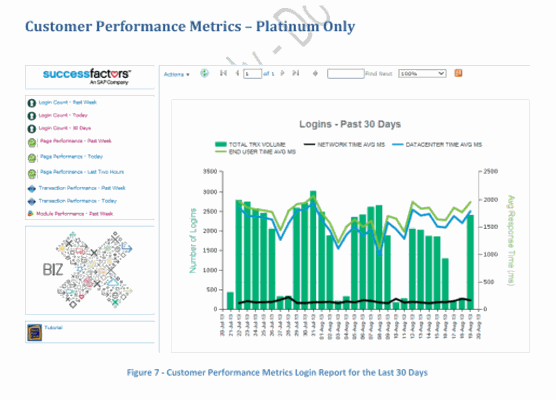
How To Open a browser to Success Factors website : start SFAPI Metering Details from the admin tools.
The API Metering Details page will give you analytics on your API usage for the last 30 days. You can use this page to see API call history analytics like how many times the API was called, or what was the total record counts accessed in your system.
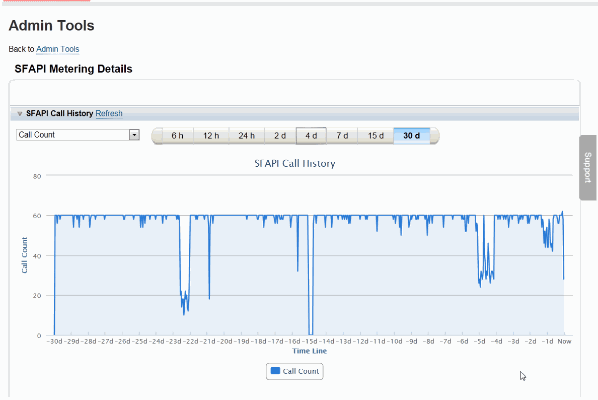
3.2.2.6 Performance and Availability in Solution Manager
3.2.2.6.1 General Infrastructure
It is possible to measure performance and availability of the solution via the End User Experience Monitoring tool in Solution Manager.
Based on recorded scenario which can be deployed and executed from different locations towards the Cloud, it gives an overview of the scenario performance during the day and depending on the location.
It is available for all HTML based end user scenarios.
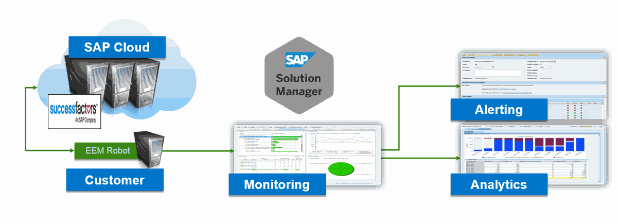
Prerequisites and additional information
Solution Manager 7.10 SP10
3.2.2.6.2 SuccessFactors use case
Some pre-delivered scripts allow to check the behavior of your Success Factor solution from different locations. However this should be used only in case of bad performance suspicion and in agreement with the cloud provider as this might generate some unnecessary load on the cloud provider side and generate even worse performance.
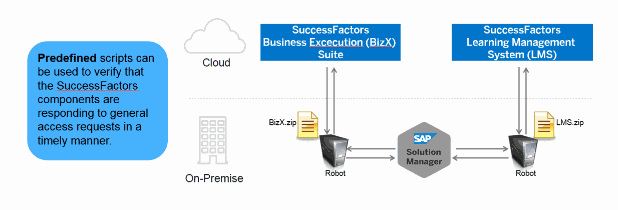
Existing scripts are available in the following location:
http://wiki.scn.sap.com/wiki/display/EEM/Monitoring+Successfactors+with+EEMCustomer
3.2.2.7 Transactions Report ( Platinum Only)
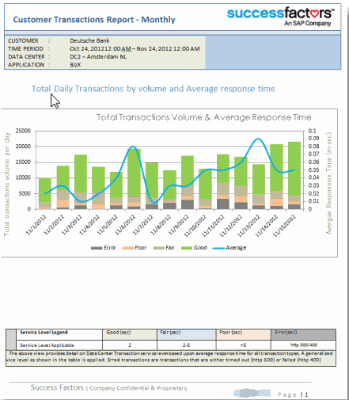
3.2.3 Performance and Availability Management via SAP Solution Manager
API should be provided but no data is available yet.
Standard tools for on-premise are still available in case the customers has a hybrid solution.
In general, to be able to use the different monitoring tools in SuccessFactors environment, it is necessary to:
- Run the Managed System Configuration for any on-premise technical system which should be considered (in case of hybrid scenario)
- Create the cloud services via Basic Setup for Monitoring SAP Based Hybrid Solutions (s2c_setup)
- Run the technical monitoring infrastructure configuration
- Configure the Solution Manager self-monitoring (mandatory for SFTP monitoring)
3.2.4 Performance optimization via Akamai
Prerequisites and additional information
Akamai optimization has to be enabled
In case a Success Factors customer has licensed Akamai optimization for a certain SuccessFactors module but still observes unsatisfactory internet latencies or strong internet response time differences between business regions, the customer should address this to SuccessFactors support in order to check if Akamai optimization has been enabled and is used properly. In case a certain SuccessFactors module shows unsatisfactory internet latencies and Akamai services have not been enabled yet for this module, the customer is encouraged to contact SuccessFactors support in order to assist with the available options of Akamai usage.









